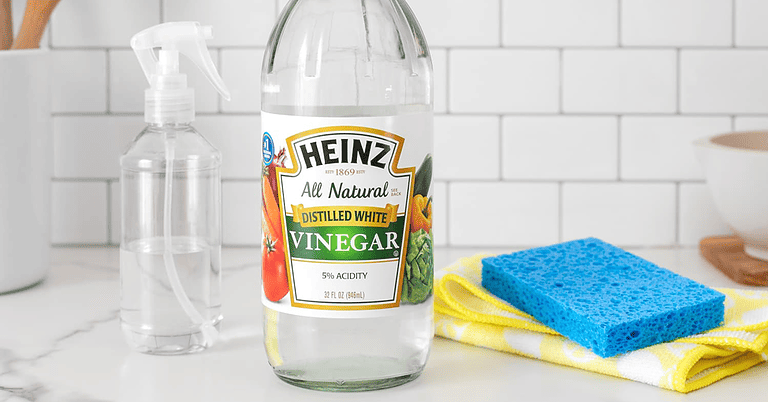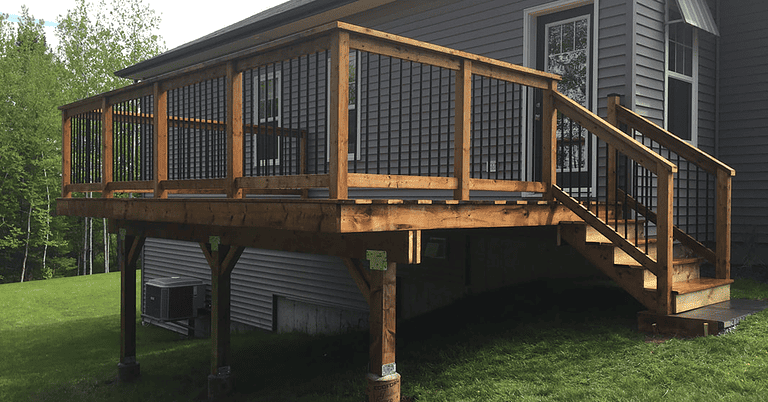How Long Does It Take Mortar To Dry
When working with mortar in various construction and tiling projects, understanding the drying time is crucial to ensure the materials’ proper installation and long-term durability. Mortar, a mixture of Portland cement, sand, and water, is commonly used to bond bricks, tiles, and other building materials together.
The drying time of mortar can be influenced by various factors such as temperature, humidity, and the right mix of materials. Letting mortar cure properly ensures a strong bond, structural integrity, and a durable finish. In our guide, you can learn more about how long does mortar take to set. By the end, you’ll better understand for how long mortar dry compared to the curing time for mortar. (Learn How To Fix Stripped Screw Hole In Metal)

What Is Mortar?
Mortar is a versatile material used in construction and tile installation projects for bonding and sealing various building materials together. It typically comprises Portland cement, sand, and water, with additional additives for specific properties or applications. Several types of mortar are available, each with unique characteristics and use, like Thinset Mortar and Brick Mortar.
Thinset Mortar: Composition: Thinset mortar is a type of adhesive mortar commonly used for tile installation. It is typically made of Portland cement, sand, and water, with additional additives like latex or polymers to improve adhesion and flexibility.
Applications: Thinset mortar is used for bonding tiles to various surfaces, including floors, walls, and countertops. It suits multiple tile types, like ceramic, porcelain, and natural stone.
Properties: Thinset mortar dries relatively quickly, allowing for efficient tile installation. It provides excellent adhesion, durability, and water resistance, ideal for wet areas like bathrooms and kitchens.
Brick Mortar: Composition: Brick mortar is a cementitious mortar formulated explicitly for masonry work, like bricklaying or stone construction. It is typically composed of Portland cement, sand, and water, with additional additives for improved mortar workability and bonding.
Applications: Brick mortar is used for laying bricks, blocks, or stones in various construction projects, including walls, chimneys, and facades.
Properties: Brick mortar has excellent workability, allowing for easy application and proper leveling of bricks. It also provides strong adhesion and durability, ensuring the stability and longevity of bricks and masonry structures.
- TYPE M: The strongest type of mortar is Type M. This mortar cures to a minimum strength of 2500 psi. It is used for projects that need to withstand strong gravitational forces and large lateral loads.
- TYPE S: Type S mortar has intermediate strength and a minimum compressive strength of 1800 psi after it cures. It is typically used on exterior brick walls, patios, paving, and other projects where the mortar has direct contact with the ground.

Things That Affect the Working Process
Typically, it takes 24 hours for mortar thin to reach 60% of its final compressive strength. Then, the cure will take about 28 days to reach its full strength. But there isn’t always a set amount of time for the curing process.
A few vital external factors affect your mortar mix’s curing time. Several factors, including ambient temperature, air flow, the amount of water in your mixture, and humidity, influence mortar process.
Temperature:
The best concrete maker, TCC Materials, says that standard temperatures are between 40°F and 100°F (4.4°C and 37.8°C). The set time and strength development of mortar and grout are impacted by cold weather, which can slow down the building process.
Airflow:
The mix needs to stay hydrated and wet for the chemical process of curing to work. High winds and fans will remove the water your mortar needs to remain moist and set correctly. Enough air is essential, yet too much can make your cement or concrete dry too fast, so it can affect your mix, which won’t cure properly.
Water:
Ensure to carefully follow the instructions for mixing amounts that came with your mortar. Your mixture should only have a certain amount of water.
Humidity:
Keeping the right amount of moisture is vital for your cure time and the final strength of your used mortar dry time after cure. Although working in a high-humidity environment may lengthen the time it takes for mortar to dry, worry less about keeping it moist.
If working in low humidity, you’ll need to add more moisture.
Setting Vs. Curing
Even though the mortar mix won’t be fully set, it will soon be solid enough to move on to the next step. Depending on the humidity and temperature of the room, the mortar take to dry, and you can start putting down grout after 24 to 48 hours. (Learn How To Bleed An Overfilled Propane Tank)
What is the Fastest Drying Tile Mortar?
The right mortar mix is a vital part of any tile installation project. One of the most important factors to consider when selecting the right quick-setting mortar mix is the drying time and how long for mortar to set before you can work on it.
Quick-setting mortar cures fast as it dries, and the time it takes for mortar mix to fully dry varies based on several factors. Some quick-setting mortar allows light foot traffic, while others take longer to dry completely, slowing down your tile installation process. A fast-drying mortar layer will allow you to grout your tiles within a few hours after application. Yet, your mortar mix can take longer to fully cure before heavy foot traffic or moving appliances can be done.
How Do You Make Tile Mortar Dry Faster?
Tile mortar mix is essential for securing tiles to floors and walls. However, the drying process of applying mortar can take a considerable amount of time to complete, especially in cold weather and humid conditions. You can use several methods to speed up the drying process of tile mortar.
The first method involves using a notched trowel during installation. A notched trowel helps spread the mortar evenly and ensures proper adhesion between the tile and the surface. This technique also increases airflow around the mortar, allowing the wet beneath to dry faster.
Another way to speed up the drying process is by increasing air circulation in the room where you installed tiles. Open windows and doors or use fans to facilitate air movement throughout the space. If possible, use dehumidifiers or heaters since they help reduce moisture levels that slow down drying times.
Last, consider warming up your workspace before applying tile mortar if installing tiles during winter or in cold weather. Cold temperatures tend to prolong mortar drying times since low temperatures cause water molecules in wet mortars to move slowly, delaying evaporation rates crucial for curing mortars quickly.
You can take steps to ensure your thin-set dries quickly and correctly, even if you don’t use a quick-setting mortar. If you use powdered mortar, keep it at room temperature until you are ready to use it. When putting on mortar, use a notched trowel to spread a thin layer over the surface. When using a notched trowel, there is a thin layer of thin set mortar under the tiles, which promotes faster curing.
- Store mortar at room temperature because you will use it.
- Mix the mortar using water at room temperature.
- Spread mortar with a notched trowel to ensure a thin, quick-drying mortar layer. The size of your tiles can tell you what size trowel you need.
- Use a dehumidifier to speed up the mortar curing time.
- Mortar cures regarding touch with air; as a result, the more airflow or high winds, the faster the mortar dries and the shorter the cure time.
- The curing time depends on how humid the room is. To speed up the curing process, keep your space well-ventilated unless it’s cold and damp outside, slowing the process.
Use less water when you mix the mortar. It is a stronger bond and may be harder to work with a stronger mixture, but it will dry faster. Put the mortar on a dry surface. If too much water builds up under the mortar, it will seep into the mixture and slow the drying time.
Use a room heater to warm up the area around the mortar or send the heat toward it. The rate at which the water in the mortar mixture evaporates will be faster if the temperature is kept higher than the surrounding area’s temperature. If the thinset is cracking, turn down the heat.
Use a fan to keep as much air moving around the mortar and keep the area well-ventilated. This speeds up drying in the same way that heat does. Use a mortar mix with polymers that sets up quickly. It can be used as a base for tiles and stones, and after about six hours, it is hard enough to walk on.
How Do You Know When Tile Mortar is Dry?
When installing tile, knowing when the mortar is dry before grouting is crucial. The drying time depends on factors like the type of thin set mortar used and environmental conditions. Generally, thin-set mortar takes around 24-48 hours to dry completely. However, other mortars containing sand can take up to 72 hours or longer.
It’s essential not to rush the process, as premature foot traffic or grouting may cause damage. A simple finger test is one way to check if the tile mortar is dry. Press your finger into the center of a few tiles; if no indentation is left behind, it’s probably ready for grouting.
Alternatively, you can also use a moisture meter tool that measures humidity levels in concrete surfaces and helps determine if there is any remaining moisture in the tiles’ adhesive layer.

How Long Does Mortar Take To Dry Before Walking?
Your mortar mix plays a crucial role in tile installation, and knowing when it is safe to walk on the surface is essential. So, how long does mortar take to dry? Mortar mix drying times vary depending on humidity and temperature; you should allow the mortar to cure fully before walking on it.
Thinset mortar dries within 24-48 hours, where you can move washing machines into position, yet it takes longer to cure fully. Mortar cure refers to the time required for the mortar work to complete its chemical reaction process so you can walk on the new tile. (Learn How Long Should Roses Last)
How Long Does it Take for Mortar to Dry Under Ceramic Tile?
Powdered mortar is a common tile adhesive used in many construction projects. Once mixed with water, the mixture can be applied directly onto the surface, providing an excellent bonding agent.
However, the drying time for powdered mortar depends on several factors, like humidity, temperature, and thickness of application when applying mortar mix. When using powdered mortar to lay ceramic floor tiles, it typically takes 24-48 hours for it to dry completely.
This process can take longer if the conditions are not optimal during installation, like high humidity or cooler temperatures. It’s essential to allow enough time for the tile mortar to dry before grouting because you risk shifting or moving your tiles around.







